Cat Suddenly Stopped Using the Litter Box? 11 Possible Reasons
Updated on
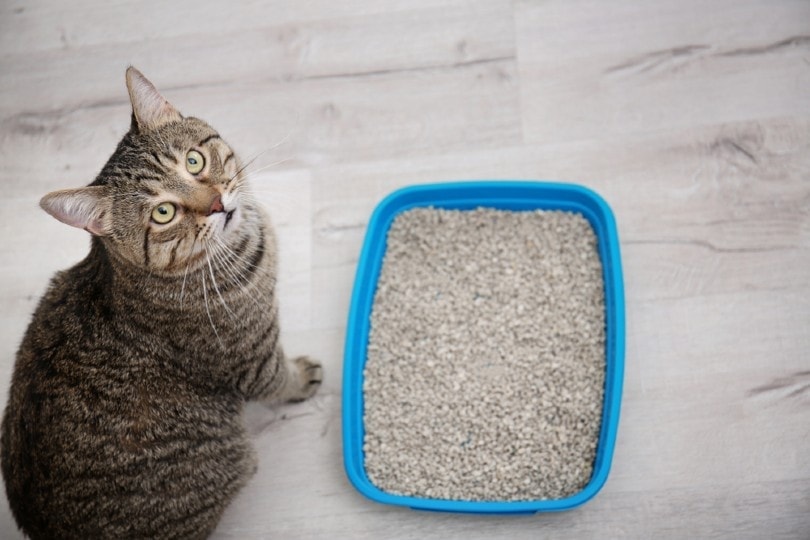
If your previously litter box-trained feline suddenly starts peeing around the house, it can be incredibly frustrating. However, this problem isn’t as rare as you might think.
Most cats regress in their housetraining at least once in their life. There are several reasons that this may happen, and they don’t include your cat just being mean! Cats typically want to use the litter box. If they aren’t, there is likely an underlying cause.
Figuring out why your feline has suddenly stopped using the litter box is essential to solving the problem. Here are several reasons that cats commonly stop using the litter box.
The 11 Reasons a Cat May Stop Using a Litter Box
1. Medical Problems
Several medical issues can make a cat urinate in inappropriate places. One includes urinary tract infections. Typically, these infections make it difficult for the cat to empty their bladder on command, making them have accidents outside the litter box. This isn’t the cat’s fault.
If your cat suddenly stops using the litter box and there isn’t any apparent reason, it could be due to an underlying medical issue.
2. New Litter Box
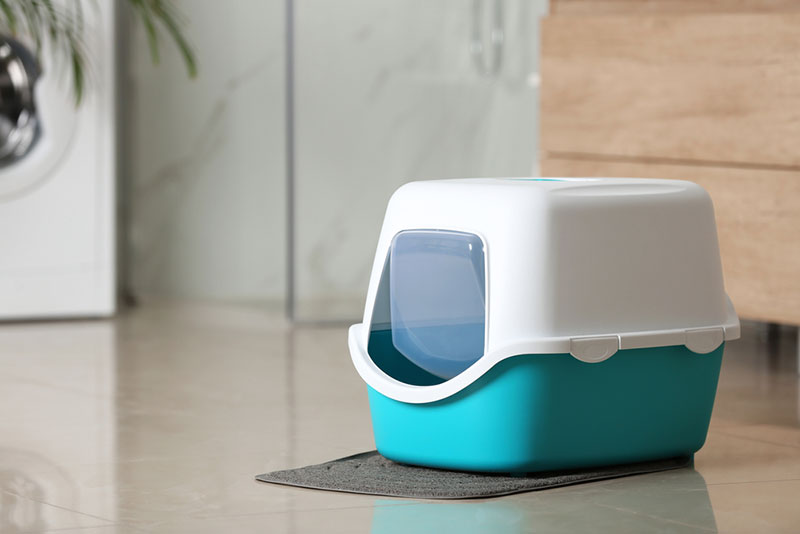
Sometimes, cats are picky about their bathroom. If you switch their litter box with a new one, they may no longer recognize it as “their” litter box. As far as they’re concerned, their litter box has disappeared!
Automated boxes can also scare cats, making them avoid the litter box. It is essential to slowly warm your cat up to these boxes, not suddenly set it up one day.
Be sure that you adjust your cat to any new box that you place, even if it looks like their old one. Start by putting the new box next to the old one, and then remove the old one when the new one starts getting used.
3. New Litter
Like a new box, some cats may also stop using their litter box if the litter is changed.
The more significant the shift between litters, the more likely they are to reject it. If your cat has always used a single type of litter, you can expect complaining when switching to a new one.
Sometimes, cats may not like the scent of a new particular litter. They may be fine if you pick a different, new scent — just not that one.
Other times, there is a problem with the texture. Cats may not like switching from clay to corn-based litter, for instance. It will feel different on their paws. They may refuse to step on it, which can make using a litter box complicated!
4. Unclean Litter Box
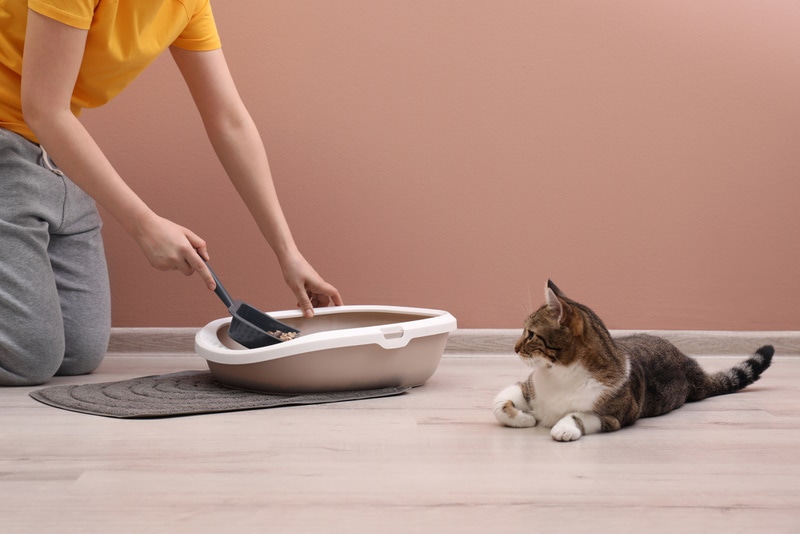
If you don’t clean the litter box regularly, your cat may eventually decide that they will not use it anymore. Cats don’t like using dirty bathrooms any more than we do.
Of course, some cats are picky regarding the cleanliness of their box. Some may refuse to use it if you’ve only missed one cleaning session. For other cats, it will take a week or so of not scooping for them to refuse the box altogether.
You should scoop the box at least once a day, though twice a day is often better! You should also remove all the litter at least once a month. Clean the litter box itself during this time.
Messes and smells are part of living with a cat, but you don't want to spend your whole day cleaning!
- Bio Enzymatic Cat Litter Freshener - Smart formulation uses natural ingredients eliminating cat...
- Save Money - Stuff for cats isn’t the cheapest. With this litter box odor eliminator, you’ll...
Our Hepper Advanced Bio-Enzyme Cat Litter Deodorizer can help keep your litter box smelling fresh for longer. This natural litter additive uses bio-enzymes to "eat away" the odors, saving you time and money. It's fragrance-free, safe for cats of all ages, effective on all types of litter, and fully biodegradable.
5. Covered Box
You may like the idea of a covered box, but your cat probably doesn’t! Many cats don’t like covered litter boxes. While they do provide privacy, they can also make cats feel a bit closed in. Cats often don’t like small places because they can’t escape from them if a predator shows up.
Cats may be exceptionally turned off from covered boxes in multi-cat households. The odds of another cat sneaking up on them are high in this situation. No feline wants to get trapped in a litter box by another cat.
You may be able to convince your cat to use a covered litter box, but some cats may always refuse.
6. Not Enough Boxes
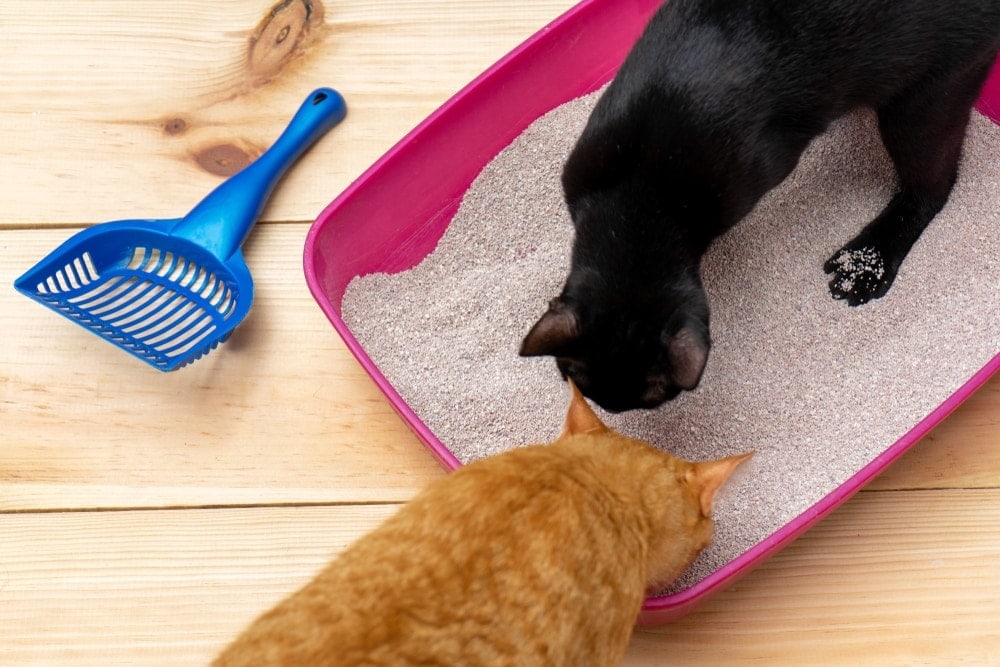
If you have multiple cats, you need multiple boxes. You should have at least the same number of boxes as you have cats. Preferably, you should have an extra box too.
Some cats may not like using a litter box after another cat already has used it. Therefore, having separate boxes enables them to have another appropriate location to go instead of a random spot somewhere else in the house.
Even with multiple boxes, you’ll need to scoop them out daily at least.
7. Inappropriate Box Locations
Where the litter box is located also matters. You should avoid putting it in high-traffic areas. Otherwise, your feline may not use it when there are people around. Most cats don’t like strangers, and some may even dislike using the litter box when people they know are around.
Your cat may decide that it’s a better idea to go somewhere else instead of the litter box.
You also shouldn’t put the litter box near cat food or water. Cats may not use the bathroom in these areas because of sanitation issues. No one likes to use the bathroom where they eat.
Avoid placing the litter box near things that may scare your feline. A laundry room may seem like a great place to put the litter box, but it also means that your cat will have to contend with a noisy washer and dryer.
If you have a larger house, you should consider whether your cat needs multiple boxes. Sometimes, the litter box is too far away from the cat when they need it. In these cases, try placing multiple litter boxes around the home, such as one upstairs and one downstairs.
For multi-cat households, be sure your litter boxes are separated. Don’t place them all in the same room — that ruins the point of having multiple litter boxes.
8. Additives

There are many litter box accessories that you can purchase. Most of these are said to help with the smell or cleaning of the litter box.
For instance, deodorizing powders are commonly sold alongside cat litter. However, these things have a reasonably strong smell and may drive your cat away from the litter box.
Liners have similar problems. Sometimes they’re scented, which can irritate your cat’s sensitive nose. Other times, the liner can tear and cause urine to pool at the bottom of the box. Cats also don’t like the feel of plastic on their claws.
Some cats may dislike the rubber mats that go outside a litter box. While this makes perfect sense to us, the weirdly textured rubber can feel weird on a cat’s feet. They may decide to bypass the mat and avoid the litter box altogether.
9. Negative Association
Sometimes, cats may have a scary experience while in the litter box. Often, this causes them to associate the litter box with that negative thing. They may not want to return to the litter box out of fear that the same thing will happen again!
If this is the case, the cat may seem reluctant to enter the box. You may notice the cat going into the box and then suddenly fleeing.
Your feline may decide that they cannot return to the box at all in case the bad thing happens. This can cause the cat to use the bathroom in other places.
Painful urination can cause this problem. The cat will associate the pain with the litter box, hold their urine until the last second, and then have an accident. Cats with urinary tract infections often have this issue. However, avoidance of the litter box can continue even after the cat’s been cured.
10. Stress
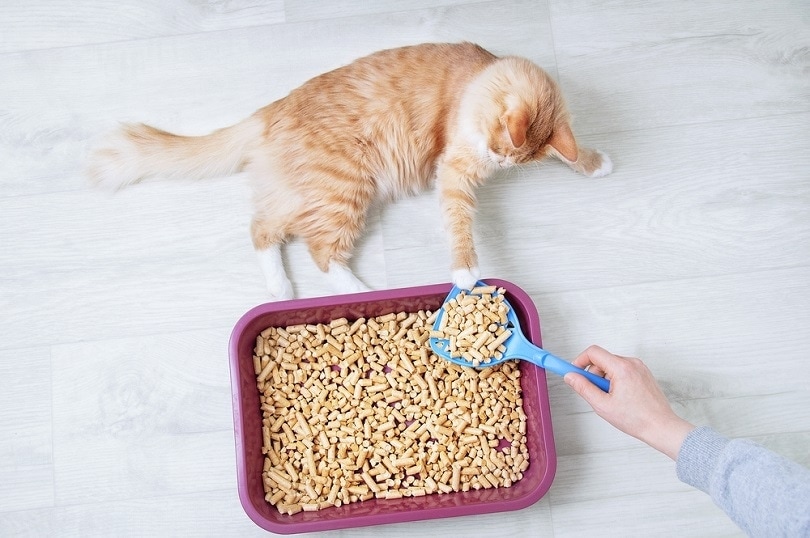
Stress can come from many different sources. Overly stressed cats may not use the litter box, either because there is something scary near the litter box or because they don’t have the emotional capacity to seek out the litter box.
Some stressed cats may attempt to hide and avoid attention as much as possible. Visiting the litter box sometimes doesn’t fall into this plan. Therefore, they may urinate in whatever room they’re hiding in.
Stress can be acute or chronic. If you have friends over and the litter box is around where you’ve gathered, then it wouldn’t be odd for your cat to avoid using it. Removing this stressor would eliminate the problem.
However, chronic stress can be more challenging to treat. You may not know why your cat is stressed (and your cat might not know either). Some cats are just high-strung and anxious. In these situations, your cat may need medication for anxiety.
11. Urine Marking
This is the conclusion that most owners jump to when their cat has an accident outside the litter box. However, not all cats urine mark, and urine marking is not the cause of all litter box problems.
Typically, cats that urine mark will use their litter box just fine. However, they will occasionally mark outside of their litter box. Usually, this occurs on vertical surfaces, like the wall or a piece of furniture. The amount of urine sprayed will typically be tiny, as the cat isn’t doing it to use the bathroom. It’s another behavior altogether.
Unneutered males are more likely to urine mark, though any cat can. It’s also more common in multi-cat households, as the cats may try to claim territory from the other cats. When you start adding more cats to a house, the odds go up that at least one will urine mark.
Stress and changes in the household can also cause urine marking. If you’ve renovated a room, changed your routine, or adopted a dog, urine marking becomes more common. It’s a stress response in that the cat is attempting to control their environment.
Households with conflicts between cats are more likely to end up with urine marking problems. The stress combined with the multiple cats can cause your feline to urine mark. They may do this as a form of stress relief and a way to claim certain areas as obviously theirs.
Preventing and Correctly Inappropriate Urination
Once you’ve identified why your cat isn’t using the litter box, you’ll need to correct the problem.
Sometimes, this is relatively straightforward. You may need to add a box, change your cat’s litter, or move the box to a new location. All these things may only take a second of your time, but they may be all that your cat needs to use their litter box again.
If your cat has a medical problem, they will need treatment. You can’t expect a cat with a urinary tract infection to properly use a litter box, for example. Their infection needs treatment first.
If stress is involved, you may need to take multiple steps. Sometimes, the source of the stress can be removed. Other times, it can’t. If the source of stress is a new schedule, you can’t always go back to your old schedule.
Even if you remove the original cause of the stress, it may not entirely remove your cat’s stress. In these situations, you’ll need to look for other ways to treat the stress, such as pheromone collars. In extreme cases, you may need to visit your vet for medication and behavioral therapy.
Conclusion
Cats may stop using their litter box for various reasons. You can’t correct this behavior until you understand why the cat started doing it in the first place. Sometimes, a medical condition may be to blame. Other times, it may be a new source of stress.
Your cat may even find something “wrong” with the litter box itself, especially if you’ve recently changed their cat litter or aren’t cleaning out their box enough.
You may need to try multiple things before one seems to stick. If the first thing that you try doesn’t work, look for other potential causes. You should always take your cat to the vet if they stop using their litter box, as urinary tract infections are a relatively common cause.
See Also:
- How to Get Rid of Cat Pee Smell: 3 Easy Ways
- Why Is Your Cat Peeing in the Laundry Basket? 9 Possible Reasons
Featured Image Credit: New-Africa, Shutterstock












